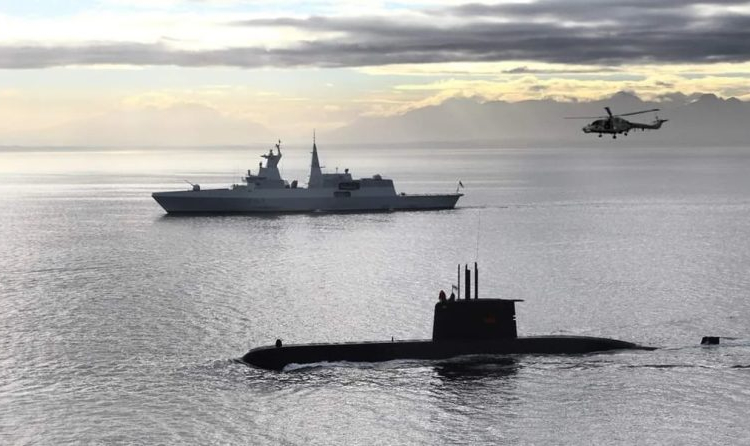The South African Navy has been allocated a substantial sum of R1.4 billion to undertake a refit of its submarine and frigate fleet. This investment comes at a critical time for the country’s naval forces, as they seek to modernize their capabilities and ensure readiness for future maritime challenges. In this article, we will explore the significance of this allocation, the planned upgrades for the submarines and frigates, and the potential implications for the South African Navy.
The allocation of R1.4 billion for the refit of the South African Navy’s submarine and frigate fleet is a significant investment in the country’s maritime defence capabilities. It reflects the government’s commitment to maintaining a modern and capable naval force that can effectively protect South Africa’s maritime interests. The South African Navy plays a crucial role in safeguarding the country’s coastal waters, securing its exclusive economic zone (EEZ), and supporting national defence and foreign policy objectives.
For years, the SANDF has been grappling with severe budget cuts which have been negatively impacting its operational efficiency.
According to Major General Thembelani Xundu, during a briefing of Parliament’s Portfolio Committee on Defence and Military Veterans (PCDMV) on 22 March, he explained that the Navy is being provided with sufficient funding to refit one frigate and one submarine, with work to be carried out between May 2023 and December 2024, followed by sea acceptance trials in early 2025. R500 million has been allocated in 2023/24 for this, R441 million the following year, and R480 million in 2025/26. Work will be carried out in the Simons Town Naval Dockyard.
The planned upgrades for the submarines and frigates are expected to enhance the South African Navy’s operational capabilities and extend the service life of these assets. The submarines in question are the three Heroine-class vessels, SAS Manthatisi, SAS Queen Modjadji, and SAS Charlotte Maxeke, which were commissioned in the 2000s. These submarines have been crucial in conducting intelligence gathering, reconnaissance, and deterrence operations, as well as supporting anti-submarine warfare exercises with other naval forces. The refit is expected to improve its sensor systems, weapons, and communication capabilities, making them more capable in modern maritime operations.
A lack of funding has negatively impacted South Africa’s navy mid-life upgrades/refits of its three submarines and four frigates, with upgrades and refits being done one at a time as budget allows. According to the Department of Defence, the average cost estimate for a frigate refit is R687 million with a submarine refit costing R660 million.
According to defenceWeb, the SAS Manthatisi recently completed a Docking and Essential Defect (DED) maintenance and is undergoing post-maintenance trials, while the SAS Queen Modjadji is currently undergoing preservation and pre-refit planning activities, in preparation for a refit. The procurement process for services is currently underway, with a requirement received from the Navy on 6 February 2023. Armscor estimates the contracting process will take approximately 140 days.
Funding to complete the refit of the SAS Charlotte Maxeke is available and the submarine is currently “in refit process” with Armscor providing project management. “Armscor Dockyard is currently going through a procurement process to contract a local supplier for support services,” the defence material agency said.
The frigates to be upgraded are the four Valour-class vessels, SAS Amatola, SAS Isandlwana, SAS Spioenkop, and SAS Mendi, which were commissioned in the late 2000s. These frigates have been the workhorses of the South African Navy, conducting a wide range of operations including surface warfare, anti-air warfare, and maritime patrol. The planned refit is expected to enhance their sensor systems, communications, and weapons capabilities, ensuring that they remain effective and capable platforms for the country’s maritime defence needs.
The refit of the submarines and frigates is not only about improving their operational capabilities but also about extending their service life. Naval assets are typically designed to operate for a certain number of years, after which they require upgrades and modernization to maintain their effectiveness. The planned upgrades are expected to extend the service life of these submarines and frigates, ensuring that they continue to be valuable assets for the South African Navy for many years to come.
The implications of this allocation for the South African Navy are significant. The refit of the submarine and frigate fleet demonstrates the government’s commitment to maintaining a modern and capable navy that can effectively protect the country’s maritime interests. It also reflects the South African Navy’s efforts to adapt to changing maritime security dynamics and maintain a credible deterrent posture in the region. With the upgraded submarines and frigates, the South African Navy will be better equipped to respond to a wide range of maritime threats, including piracy, illegal fishing, smuggling, and other transnational crimes that pose a threat to national security and economic interests.
So far, only one of four frigates (SAS Amatola) was partially refitted in 2014/15 and one of three submarines (SAS Manthatisi) was refitted in 2013/14.
This recent funding is part of a broader cash supply to improve the readiness state of the South African military. Similarly, the South Africa Department of Defence was recently allocated an additional ring-fenced funding of R1 billion in 2023/24 to strengthen the country’s medium airlift transport capability (2023 MTEF Period).
This is an important step towards the government’s commitment to the Hercules fleet and its capability to transport personnel and equipment quickly and effectively.


